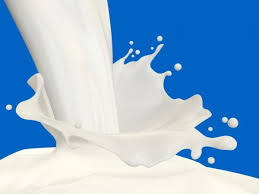Prevalence of Escherichia coli in milk and different milk products sold under market conditions at Lahore
Keywords:
Contamination;Escherichia coli;Milk products;SanitationAbstract
Milk and milkproducts are an important part of our diet. Quality of food counts much forhuman health, especially in developing countries where proper hygienicfacilities are not practiced. In the present study 120 samples (60 from areasof better sanitation and 60 from those of poor sanitation) of milk anddifferent milk products like Rasgulla, Gulabjamun, Barfi, Khoa and Dahi werescreened for the comparative analysis of presence, absence and abundance ofEscherichia coli. An overall 54% samples were contaminated with Escherichiacoli. Number and ratio of contaminations was greater in samples from areas ofpoor sanitation than those of better sanitation as expected. Whereas C.F.Ucounts of Dahi (yogurt) for both areas were amazingly higher counted up to212.16±17.54×103 and 189.35±3.42×103 for the poor and better sanitation areas,respectively. Visualization of the milk products in terms of their cultivableE. coli contents declare fecal contamination and a possible route fortravelling of enteric pathogens.
References
Anjum, M., Lodhi, K., Raza, K., 1989. Pakistan’s Dairy Industry: Issues and Policy Alternatives. Special Report Series
No. 14. Pak Econom. Analysis Network Project Islamabad.
Beuchat, L., Ryu, J., 1997. Produce handling and processing practices. Emerg. Infect. Dis. 3, 459-465.
Grewal, J., Tiwari, R., 1990. Microbiological quality of rasmalai. Food. Sci. Tech. Mysore. 27, 178-179.
Jauhiainen, T., Korpela, R., 2007. Milk peptides and blood pressureNutrition. Nutrition, 825-829.
Kaper, J., Nataro, J., Mobley, H., 2004. Pathogenic Escherichia coli. Nat. Rev. Microbiol. 2, 123-140.
Kulshrestha, S., 1990. Prevalence of enteropathogenic serogroups of E. coli in milk products samples from Bareilly
and their multiple drug resistance. Ind. Dairy. Sci. 43, 337-378.
Major, G., Chaput, J., Ledoux, M., 2008. Recent developments in calcium-related obesity research. Obes. Rev. 9,
-445.
Ruidavets, J., Bongard, V., Simon, C., 2006. Independent contribution of dairy products and calcium intake to blood
pressure variations at a population level. Hypertens 24, 671-681.
Soomro, A., 2002. Isolation of Escherichia coli from raw milk and milk products in relation to public health sold
under market conditions at Tandojam. Pak. J. Nut. 1, 151-152.

Published
How to Cite
Issue
Section
Copyright (c) 2014 A. Hussain, Sh. Ali, H. A. Shakir, J. I. Qazi, Kh. Ali, N. Ullah

This work is licensed under a Creative Commons Attribution-NonCommercial-NoDerivatives 4.0 International License.



